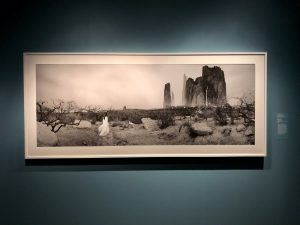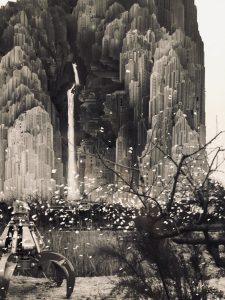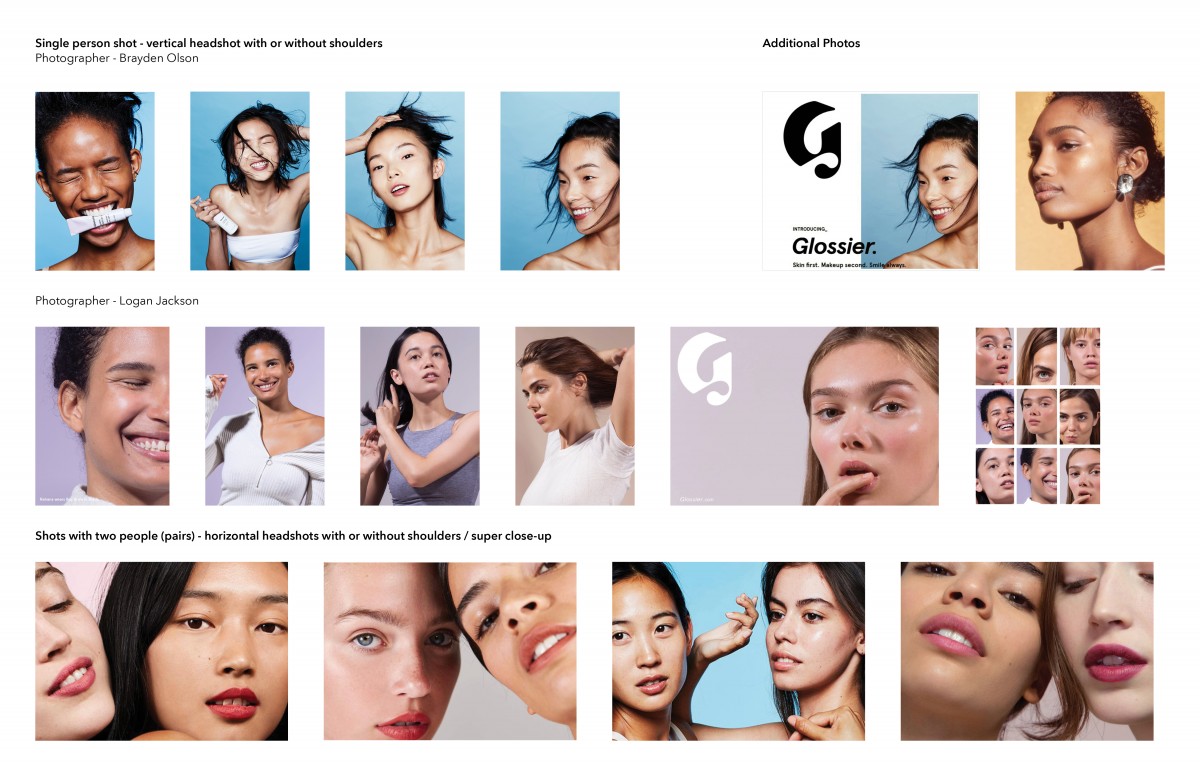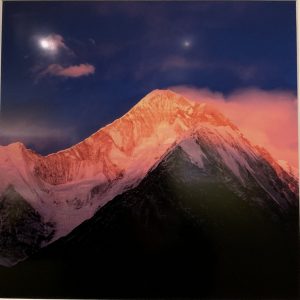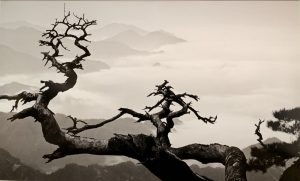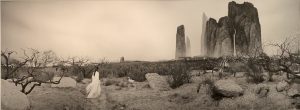The pieces from exhibit Art of the Mountain: Through the Chinese Photographer’s Lens at the China Institute Gallery were all very well composed and beautifully shot.
The first photograph I chose was Huangshan: Monkey Enjoying a View of the Sea, 2012 by Zhang Jiaxuan. The first thing I noticed from this photograph was the rich blue color from the mountains and the sea of clouds. It wasn’t until I carefully looked at the photo that I saw this monkey looking figure on the top left. After reading the description that goes along with this photograph, it turns out that it’s not an actual monkey but actually a huge rock. This reminded me of the Monkey King. Those of you, who aren’t familiar with the tale he is a fictional character born from a stone who is immortal, possesses strength and speed, is able to transform and has a staff. Zhang wanted to capture this magical sea of clouds because it makes you feel as if you were in the sky, that it isn’t a sea on earth, but a sea in heaven. It is interesting to hear that because the Monkey King wanted to be amongst the gods as an equal but was never recognized as one, so he rebelled. In this photograph, it is kind of like the monkey king looking into the distance at heaven, a place he longs to be a part of but can’t reach.
Addressing the composition of this photograph, there is a rule of thirds, the monkey rock on top of the peak in a third of the frame. Based on the angle of light hitting the sides of the mountains, the light is coming from the right. There is a sense of depth, the mountain on the bottom right of the photo being in the foreground, the monkey on top of the peak mid-ground, and the sea of clouds in the background.
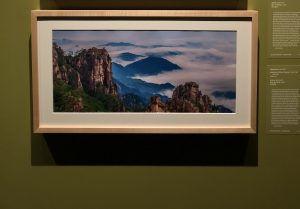
Another photograph I chose was Huangshan A093, 1991 by Wang Wusheng. This was taken at Paiyunting, Xihai area, Mount Huang. The composition of this photograph is in black and white. It looks like a scene taken right out of Jurassic Park with no signs of human life and uninhabitable. The mountain in the middle of the photo reminds me of a tuning fork. There is a strong contrast between dark and light. The misty fog seems to illuminate the details on the mountains, the trees hanging alongside, and the peak on the ‘tuning fork’ looking mountain. There is also a sense of foreground, mid-ground, and background. The trees on the bottom left of the mountain are the foreground, the two peaks in the midst of the fog in the middle ground, and the rest of the mountains and fog in the background. The ‘tuning fork’ peak could even be interpreted as an entrance to a different world but that might just be my imagination.
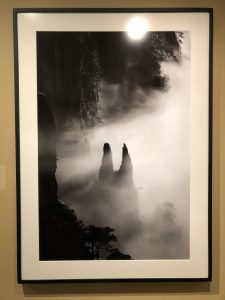
Lastly, the one that peaked my interest the most was the photograph titled Peach Blossom Colony, 2011 (Series: Peach Blossom Colony No. 1) by Yang Yongliang. The subject of Yang’s Peach Blossom Colony originates from Tao Yuanming’s “Record of the Peach Blossom Spring” fable in prose form about a fisherman who finds a secluded utopia. The subject of this photograph is the woman on the left wearing white. She is standing in what appears to be a deserted wasteland. To the right, you see scattered blossoms, a piece of machinery and in the back, you see these mountains. However, if you look up close these mountains are actually buildings collaged together to form the shape of the mountain. To the left behind the withering trees, you see what looks like suburb housing along with two other people. There were two directions the woman could have gone in, the one with the more peaceful secluded society or the modern, fast-paced society. By the way her body is positioned, she appears to be heading in the direction of the scattered blossoms and modern buildings.
In the foreground you have the woman standing in the barren wasteland, in the middle ground are the paths, and the background is the two different societies. The angle this is shot at seems kind of like a panoramic view. There is a composed direction to looking at this photograph; your eye automatically goes to the woman wearing the white dress because of the strong contrast. Then your eye follows her direction toward the scattered blossoms and onward to the mountains. Yang’s intended message is that in the development of today’s society, materialism and consumerism have progressively taken their toll on the life of mankind. What was once green forests are now concrete reinforced with iron bars. Seen from afar, his photograph seems very peaceful. When you take a closer look, you see the details and elements of modernization.
